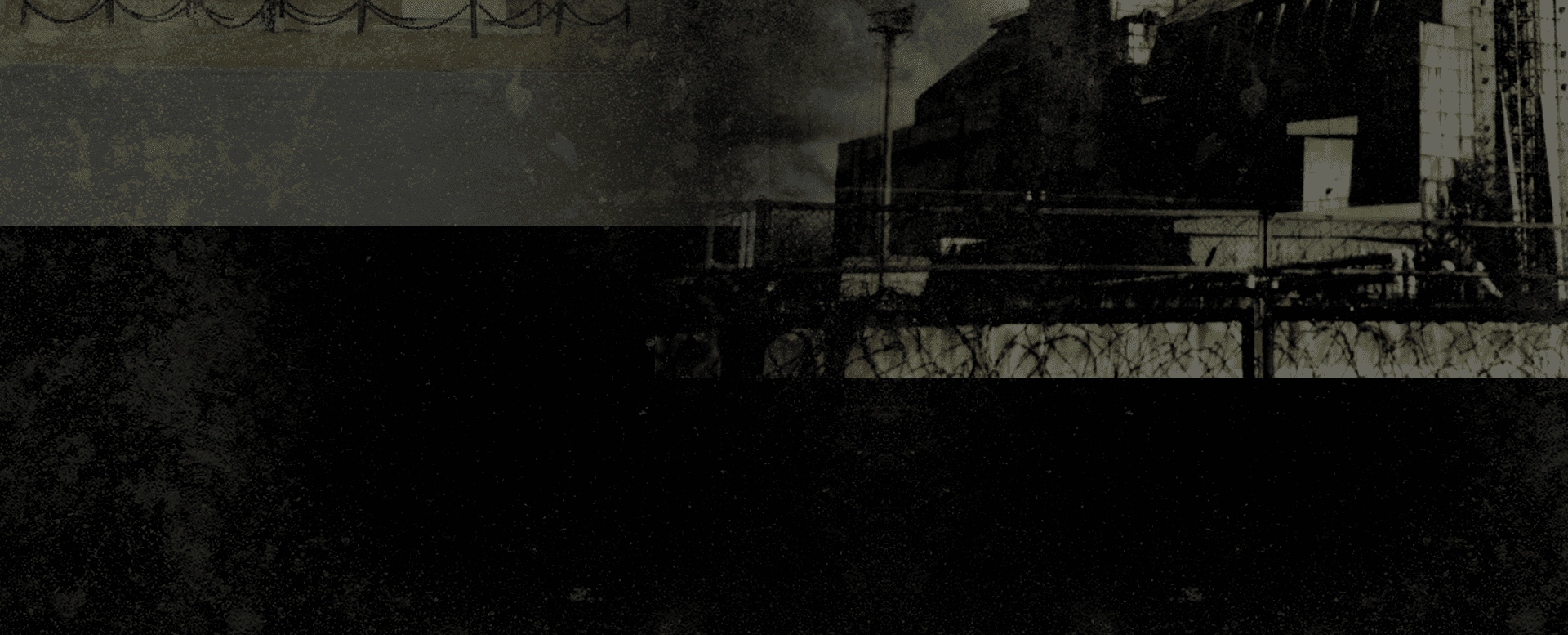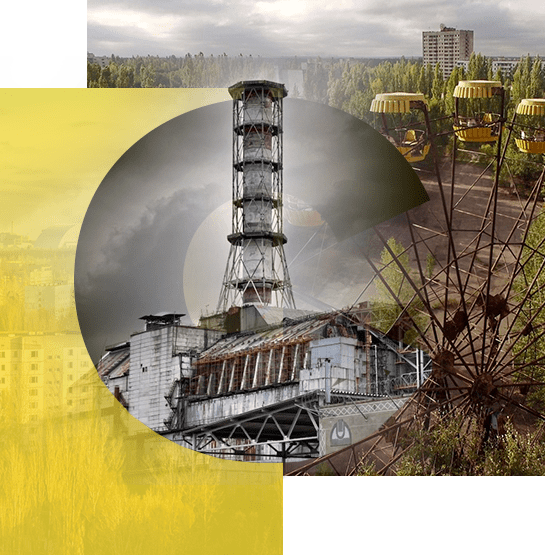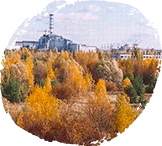On April 26, 1986, at 1:23:45 am, during a test of the turbogenerator № 8, a hydrothermal explosion occurred at the 4 power unit, which completely destroyed the reactor. The building of the power unit and the roof of the engine room partially collapsed. More than 30 fires broke out in various rooms and on the roof. As a result of the accident, up to 14⋅1018 Bq were released into the environment, according to various estimates, which is approximately 380 million curies of radioactive substances, including isotopes of uranium, plutonium, iodine-131, cesium-134, cesium-137, strontium-90 ...









